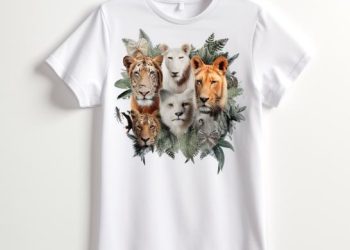Unit 3.4 IB Business Management
Unit 3.4 Trading and Profit and loss account (P&L)
INTRODUCTION TO VANISHING PANDA
Two young entrepreneurs recently converted their business (Vanishing Panda) from a partnership into a private limited company (ltd). Whilst they were aware that they would have to produce and submit financial records each year, they were not 100% clear on what records were needed and what they would look like!
Their business was creating almost indestructible t-shirts that promoted actual sustainability in two ways. Firstly, the t-shirts were built to last. Secondly, the environmental designs printed on the shirts were made in two different inks! One ink would last forever and one (made of algae) would fade fast! The idea was to show vanishing environments and make a fashion statement impact! They were successfully selling for $30-40$ each in stores across New Zealand where they both live! Vanishing Panda does still owe some money to the bank from their initial loan!
Jessie took control of this side of the business and reached out to their account and asked for clarification.
Once Jessie received a reply from the account, she realised that the first financial document would be the ‘trading and profit and loss’ account (or P&L for short). An example is set out below!





PROFIT AND LOSS #1
Jessie’s business partner, Rob talked about creating a profit and loss account for Vanishing Panda. Rob has no clue what he’s doing and so Rob got a list of financial figures together and presented it to Jessie! The list can be see below (left)


QUESTIONS FROM PROFIT AND LOSS #1
- State one purpose of the trading and profit and loss account [1]
- State how revenue is calculated [1]
- Explain two ways in which retained profit can be used / spent [4]
- Identify which items do not fit into the trading and profit account [6]
PROFIT AND LOSS #2
Jessie’s helped Rob out to create a proper list of items for the P&L account for Vanishing Panda. It can be seen below.


QUESTIONS FROM PROFIT AND LOSS #2
- Define the term stakeholder [2]
- Explain two stakeholder groups for Vanishing Panda [4]
- Construct a profit and loss account for Vanishing Panda [5]
- Explain whether performance can be judged solely on this quantitative information [4]
PROFIT AND LOSS #3
By now, Rob was starting to get the format and purpose of a Trading and Profit and Loss account (P&L). He recognised that some items were missing that were important!
Rob also thought it might be interesting to create a profit and loss with the missing items of Interest, Tax, Dividends (10% of profit) and retained profit!

QUESTIONS FROM PROFIT AND LOSS #3
- Construct a trading and profit and loss account for Vanishing Panda using the additional information for interest, tax, and retained profit [5]
- Identify how much money Vanishing Panda will pay in dividends [1]
- Identify how much retained profit will be [1]


Suggested answers: Profit and Loss #1
State one purpose of the trading and profit and loss account [1]
Revenue is calculated as the total income generated by a business through its primary operations, such as sales of goods or services.
State how revenue is calculated [1]
Formula: Revenue = Quantity sold × Unit price
Explain two ways in which retained profit can be used / spent [4]
Retained profit could either be spent by the business owner
OR invested back into the business to generate future growth.
OR, a third option could be to increase dividend payouts to shareholders as a reward for investing
Identify which items do not fit into the trading and profit account [6]
Accumulated depreciation, cash, net assets, debtors, creditors & bank overdraft
Suggested answers: Profit and Loss #2
Define the term stakeholder [2]
A stakeholder is anybody with an ‘interest’ in a business or organisation. Typically, stakeholders grow in number as the business increases in size
Explain two stakeholder groups for Vanishing Panda [4]
Customers, suppliers and the bank could be identified as direct stakeholders who have an interest in the business (Vanishing Panda) performing well. If vanishing panda performs badly, each stakeholder has the potential to be negatively affected (each in a slightly different way).
Construct a profit and loss account for Vanishing Panda [5]
See below
Explain whether performance can be judged solely on this quantitative information [4]
Profit and loss accounts offer a static overview of a businesses trading position at a particular point.
To add interests and use, normally two years data (at least) are compared to indicate improvement or deterioration. Additionally, it may be useful to convert the data into percentages and compare to industry benchmarks.
Adding context may also be useful. For example, if Vanishing Panda make a modest loss, this could be a disaster for a larger business, but acceptable for a business who have just begun trading.
Not all business objectives are profit! This might be worth considering.
Tax or interest rates may change without warning creating a less profitable outcome. However, if products are inelastic in demand then this may not be serious!
Does the firm have barriers to entry or market power? Again, this may afford some protection to revenue or profits.
Is the market a new market? If so, new entrants into the market may erode a profitable position !
Does the company have a patent? If so, this may deter copying or new entrants into the market and protect the sales of a business.
Other points that are valid and explained could be useful if they articulate that, alone, quantitative information can be of limited value!

Suggested answers: Profit and Loss #3
Construct a trading and profit and loss account for Vanishing Panda using the additional information for interest, tax, and retained profit [5]
See below P&L worked example!
Identify how much money Vanishing Panda will pay in dividends [1]
See below P&L worked example!
Identify how much retained profit will be [1]
See below P&L worked example!




Profit and loss accounts beyond the classroom
In IB Business Management, particularly in Unit 3.4, the profit and loss account—also known as the income statement—is a cornerstone financial document. It delineates a company’s revenues, expenses, and resultant profits or losses over a specific period, offering invaluable insights to investors and stakeholders.
The Dual Role of Profit and Loss Accounts
A well-structured profit and loss account serves as a beacon for decision-making. It enables investors to assess profitability trends, guiding investment choices. For stakeholders, it provides transparency into financial health, fostering trust and informed engagement. However, if misrepresented or misunderstood, these accounts can mislead, potentially resulting in misguided strategies or eroded stakeholder confidence.
Real-World Illustrations
Transurban’s Traffic-Driven Profit Surge: Transurban, a prominent toll road operator, reported a 9.4% increase in net operating profit to $1.452 million for the six months ending December 31, attributed to a rise in traffic as commuters returned to work. This showcases how operational factors directly influence the profit and loss account.
Upstart Holdings’ Earnings Upswing: Upstart Holdings Inc., leveraging AI in lending decisions, reported a fourth-quarter revenue of $219 million, a 56% year-over-year increase, surpassing expectations. This highlights the impact of innovative business models on profitability.
Manchester United’s Financial Challenge: Despite achieving record revenues of £661.8 million, Manchester United reported an annual loss of £113 million, influenced by exceptional items such as structural review costs and executive payoffs. This underscores the importance of managing expenses to maintain profitability.
Key Takeaways for IB Business Management Students
Strategic Decision-Making: Regular analysis of profit and loss accounts informs strategic planning, ensuring alignment with financial realities.
Transparency and Trust: Accurate reporting fosters stakeholder trust, essential for sustainable business relationships.
Learning from Real-World Cases: Examining diverse financial outcomes, such as those of Transurban, Upstart Holdings, and Manchester United, provides practical insights into the dynamics of profitability.
By integrating these principles, students can develop a nuanced understanding of how profit and loss accounts function as both tools and indicators within the business landscape.
